Energy Consumption Optimization and User Comfort Maximization in Smart Buildings Using a Hybrid of the Firefly and Genetic Algorithms
Abstract
1. Introduction
2. Literature Review
3. Proposed Approach
3.1. Proposed AI Algorithm
- An initial population is created for the GA using the standard FA population.
- The fitness function for user comfort is computed using Equation (13).
- The best individuals are selected using Roulette wheel, Rank, or tournament selection. In our work, rank-based selection was used.
- One-point crossover of the selected individuals is performed.
- Offsprings are generated after the crossover.
- The mutation operation is performed.
- The above steps are repeated for the specified number of iterations.
- When the termination criterion is met, the best-fitted chromosomes are selected.
- The best chromosomes obtained represent the value of the maximum comfort index.
3.2. Comfort Index
- = total required power,
- = power required for temperature comfort,
- = power required for illumination comfort, and
- = power required for air quality comfort.
3.3. Fuzzy Controllers
3.3.1. Temperature Fuzzy Controller
- If ( = = NH), then = PR1NH
- If ( = = NM), then = PR1NM
- If ( = = NL), then = PR1NL
- If ( = = ZE), then = PR1ZE
- If ( = = PL), then = PR1PL
- If ( = = PM), then = PR1PM
- If ( = = PH), then = PR1PH
3.3.2. Illumination Fuzzy Controller
- If ( = = HS), then = HS
- If ( = = MS), then = MS
- If ( = = BS), then PR2 =
- If ( = = OK), then PR2 =
- If ( = = SH), then PR2 =
- If ( = = H), then PR2 =
3.3.3. Air Quality Fuzzy Controller
- If ( = = LOW), then =
- If ( = = OK), then =
- If ( = = SH), then =
- If ( = = LH), then =
- If ( = = HIGH), then =
3.4. Coordinator
3.5. Actuators
4. Experimental Setup and Discussion
4.1. Parameter Optimizations
4.2. Temperature Control System
4.3. Illumination Control System
4.4. Air Quality Control System
5. Statistical Analysis of All Approaches
6. Conclusions and Future Work
Author Contributions
Funding
Conflicts of Interest
References
- Ali, S.; Kim, D.H. Optimized Power Control Methodology Using Genetic Algorithm. Wirel. Pers. Commun. 2015, 83, 493–505. [Google Scholar] [CrossRef]
- Ali, S.; Kim, D.H. Effective and Comfortable Power Control Model Using Kalman Filter for Building Energy Management. Wirel. Pers. Commun. 2013, 73, 1439–1453. [Google Scholar] [CrossRef]
- Wang, Z.; Yang, R.; Wang, L. Multi-Agent Control System with Intelligent Optimization for Smart and Energy-Efficient Buildings. In Proceedings of the IECON 2010-36th Annual Conference on IEEE Industrial Electronics Society, Piscataway, NJ, USA, 7–10 November 2010; pp. 1144–1149. [Google Scholar]
- Dounis, A.I.; Caraiscos, C. Advanced Control Systems Engineering for Energy and Comfort Management in a Building Environment—A Review. Renew. Sustain. Energy Rev. 2009, 13, 1246–1261. [Google Scholar] [CrossRef]
- Wang, Z.; Yang, R.; Wang, L. Multi-Agent Intelligent Controller Design for Smart and Sustainable Buildings. In Proceedings of the 2010 IEEE International Systems Conference, Piscataway, NJ, USA, 5–8 April 2010; pp. 277–282. [Google Scholar]
- Emmerich, S.J.; Persily, A.K. State-of-the-Art Review of CO2 Demand Controlled Ventilation Technology and Application; Diane Publishing: Collingdale, PA, USA, 2003. [Google Scholar]
- Wahid, F.; Ismail, L.H.; Ghazali, R.; Aamir, M. An Efficient Artificial Intelligence Hybrid Approach for Energy Management in Intelligent Buildings. KSII Trans. Internet Inf. Syst. 2019, 13, 5904–5927. [Google Scholar] [CrossRef]
- Wahid, F.; Ghazali, R.; Ismail, L.H. Improved Firefly Algorithm Based on Genetic Algorithm Operators for Energy Efficiency in Smart Buildings. Arab. J. Sci. Eng. 2019, 44, 4027–4047. [Google Scholar] [CrossRef]
- Shaikh, P.H.; Nor, N.B.M.; Nallagownden, P.; Elamvazuthi, I.; Ibrahim, T. Intelligent Multi-Objective Control and Management for Smart Energy Efficient Buildings. Int. J. Electr. Power Energy Syst. 2016, 74, 403–409. [Google Scholar] [CrossRef]
- Alfano, F.R.D.; Olesen, B.W.; Palella, B.I.; Riccio, G. Thermal Comfort: Design and Assessment for Energy Saving. Energy Build. 2014, 81, 326–336. [Google Scholar] [CrossRef]
- EN Standard 16798-1. Indoor Environmental Input Parameters for Design and Assessment of Energy Performance of Buildings Addressing Indoor Air Quality, Thermal Environment, Lighting and Acoustics; Module M1-6—European Committee for Standardization: Brussels, Belgium, 2019. [Google Scholar]
- Fanger, P.O. Thermal comfort. Analysis and applications in environmental engineering. In Thermal Comfort. Analysis and Applications in Environmental Engineering; Danish Technical Press: Copenhagen, Denmark, 1970. [Google Scholar]
- Huang, L.; Zhu, Y.; Ouyang, Q.; Cao, B. A Study on the Effects of Thermal, Luminous, and Acoustic Environments on Indoor Environmental Comfort in Offices. Build. Environ. 2012, 49, 304–309. [Google Scholar] [CrossRef]
- ASHRAE. “Thermal Environmental Conditions for Human Occupancy”, ANSI/ASHRAE 55; American Society of Heating, Refrigerating and Air Conditioning Engineers: Atlanta, GA, USA, 1992. [Google Scholar]
- ISO Standard 7730. Ergonomics of the Thermal Environment—Analytical Determination and Interpretation of Thermal Comfort Using Calculation of the PMV and PPD Indices and Local Thermal Comfort; International Organization for Standardization: Geneva, Switzerland, 2005. [Google Scholar]
- Alfano, F.R.D.; Palella, B.I.; Riccio, G.; Toftum, J. Fifty Years of Fanger’s Equation: Is there Anything to Discover Yet? Int. J. Ind. Ergon. 2018, 66, 157–160. [Google Scholar] [CrossRef]
- Yang, X.-S. Firefly Algorithm. Eng. Optim. 2010, 20, 221–230. [Google Scholar] [CrossRef]
- Fister, I.; Yang, X.S.; Fister, D. Firefly Algorithm: A Brief Review of the Expanding Literature. In Cuckoo Search and Firefly Algorithm; Springer: Cham, Switzerland, 2014; pp. 347–360. [Google Scholar]
- Wetter, M.; Bonvini, M.; Nouidui, T.S. Equation-Based Languages—A New Paradigm for Building Energy Modeling, Simulation and Optimization. Energy Build. 2016, 117, 290–300. [Google Scholar] [CrossRef]
- Wang, Z.; Wang, L.; Dounis, A.I.; Yang, R. Multi-Agent Control System with Information Fusion Based Comfort Model for Smart Buildings. Appl. Energy 2012, 99, 247–254. [Google Scholar] [CrossRef]
- Bluyssen, P.M.; Aries, M.B.C.; Van Dommelen, P. Comfort of Workers in Office Buildings: The European HOPE Project. Build. Environ. 2011, 46, 280–288. [Google Scholar] [CrossRef]
- Marino, C.; Nucara, A.; Pietrafesa, M. Proposal of Comfort Classification Indexes Suitable for Both Single Environments and Whole Buildings. Build. Environ. 2012, 57, 58–67. [Google Scholar] [CrossRef]
- Korkas, C.D.; Baldi, S.; Michailidis, I.; Kosmatopoulos, E.B. Intelligent Energy and Thermal Comfort Management in Grid-Connected Microgrids with Heterogeneous Occupancy Schedule. Appl. Energy 2015, 149, 194–203. [Google Scholar] [CrossRef]
- Korkas, C.D.; Baldi, S.; Michailidis, I.; Kosmatopoulos, E.B. Occupancy-Based Demand Response and Thermal Comfort Optimization in Microgrids with Renewable Energy Sources and Energy Storage. Appl. Energy 2016, 163, 93–104. [Google Scholar] [CrossRef]
- Delgarm, N.; Sajadi, B.; Kowsary, F.; Delgarm, S. Multi-Objective Optimization of the Building Energy Performance: A Simulation-Based Approach by Means of Particle Swarm Optimization (PSO). Appl. Energy 2016, 170, 293–303. [Google Scholar] [CrossRef]
- Penna, P.; Prada, A.; Cappelletti, F.; Gasparella, A. Multi-Objectives Optimization of Energy Efficiency Measures in Existing Buildings. Energy Build. 2015, 95, 57–69. [Google Scholar] [CrossRef]
- Yu, W.; Li, B.; Jia, H.; Zhang, M.; Wang, D. Application of Multi-Objective Genetic Algorithm to Optimize Energy Efficiency and Thermal Comfort in Building Design. Energy Build. 2015, 88, 135–143. [Google Scholar] [CrossRef]
- Lu, Y.; Wang, S.; Zhao, Y.; Yan, C. Renewable Energy System Optimization of Low/Zero Energy Buildings Using Single-Objective and Multi-Objective Optimization Methods. Energy Build. 2015, 89, 61–75. [Google Scholar] [CrossRef]
- Carlucci, S.; Cattarin, G.; Causone, F.; Pagliano, L. Multi-Objective Optimization of a Nearly Zero-Energy Building Based on Thermal and Visual Discomfort Minimization Using a Non-Dominated Sorting Genetic Algorithm (NSGA-II). Energy Build. 2015, 104, 378–394. [Google Scholar] [CrossRef]
- Fayaz, M.; Kim, D. Energy Consumption Optimization and User Comfort Management in Residential Buildings Using a Bat Algorithm and Fuzzy Logic. Energies 2018, 11, 161. [Google Scholar] [CrossRef]
- Nguyen, T.A.; Aiello, M. Energy Intelligent Buildings Based on User Activity: A Survey. Energy Build. 2013, 56, 244–257. [Google Scholar] [CrossRef]
- Li, S.; Chen, H.; Wang, M.; Heidari, A.A.; Mirjalili, S. Slime Mould Algorithm: A New Method for Stochastic Optimization. Future Gener. Comput. Syst. 2020. [Google Scholar] [CrossRef]
- Faramarzi, A.; Heidarinejad, M.; Stephens, B.; Mirjalili, S. Equilibrium Optimizer: A Novel Optimization Algorithm. Knowl. Based Syst. 2020, 191, 105190. [Google Scholar] [CrossRef]
- Granite, E.J.; Hargis, R.A.; Pennline, H.W. Sorbents for Mercury Removal from Flue Gas (No. DOE/FETC/TR-98-01); Federal Energy Technology Center-Pittsburgh (FETC-PGH): Pittsburgh, PA, USA, 1998.
- Lobo, F.G.; Goldberg, D.E.; Pelikan, M. Time Complexity of Genetic Algorithms on Exponentially Scaled Problems. In Proceedings of the 2nd Annual Conference on Genetic and Evolutionary Computation, Las Vegas, NV, USA, 8 July 2000; pp. 151–158. [Google Scholar]
- Eberhart, R.; Kennedy, J. Particle Swarm Optimization. In Proceedings of the IEEE International Conference on Neural Networks, Perth, Australia, 27 November–1 December 1995; Volume 4. [Google Scholar]
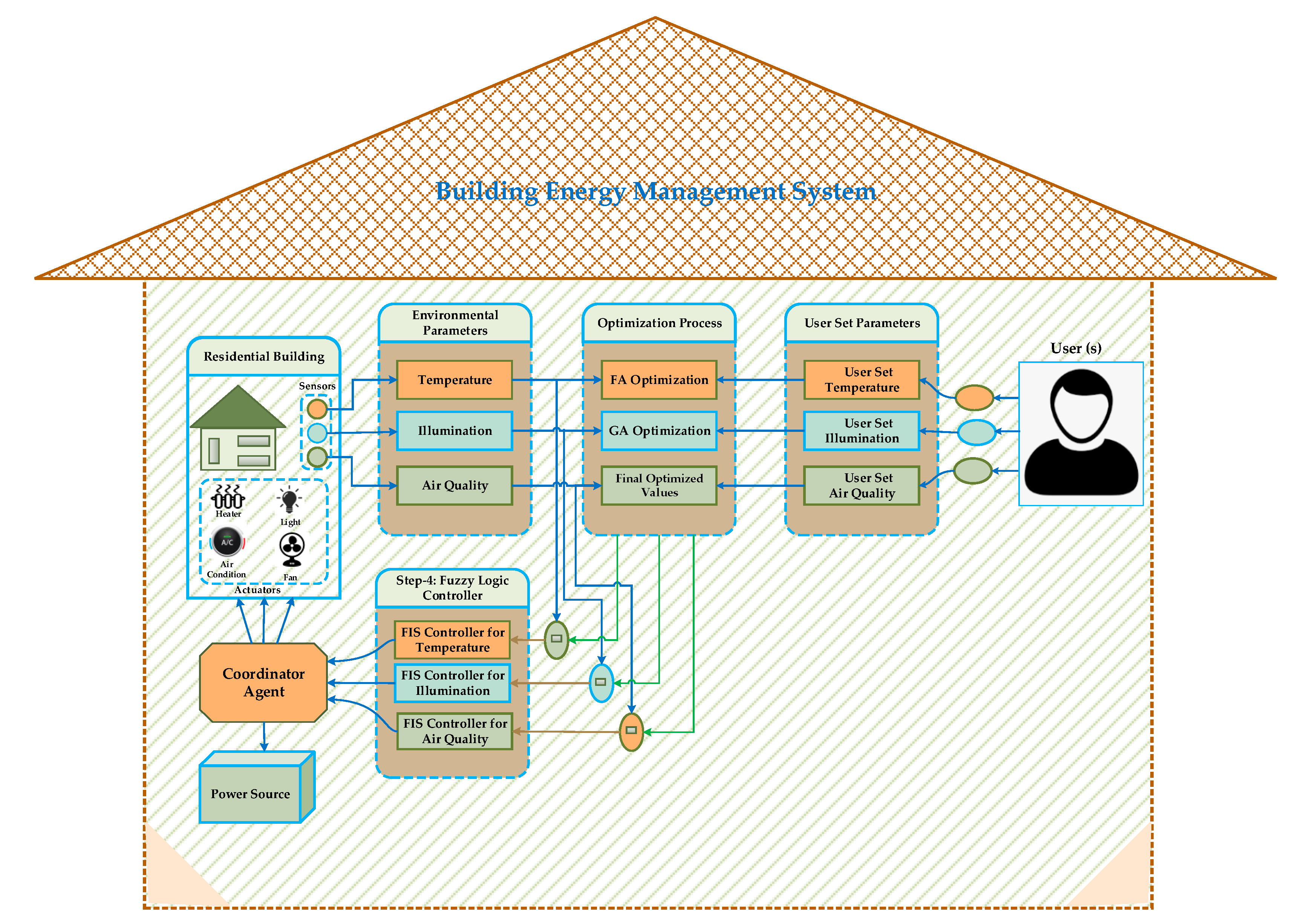
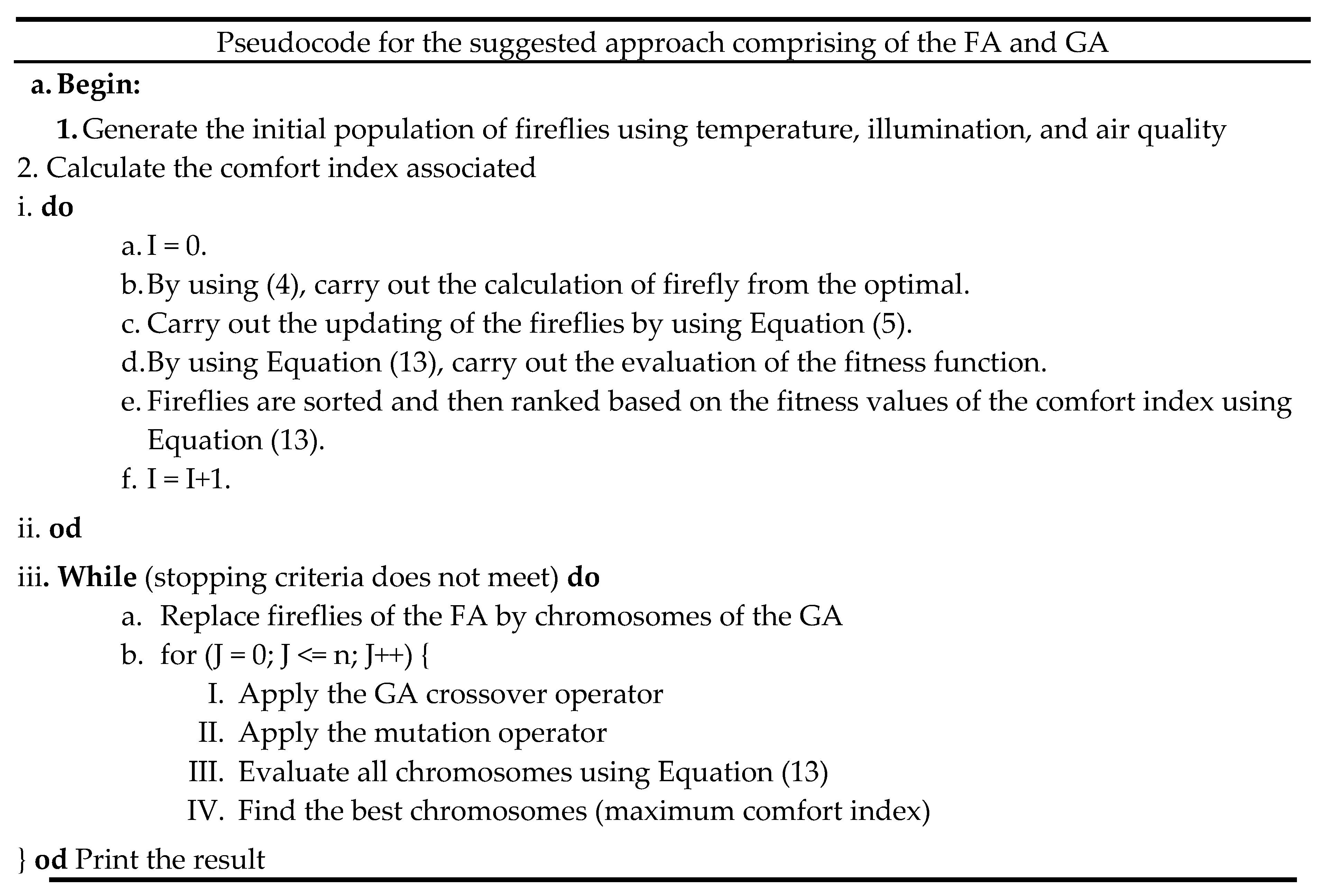
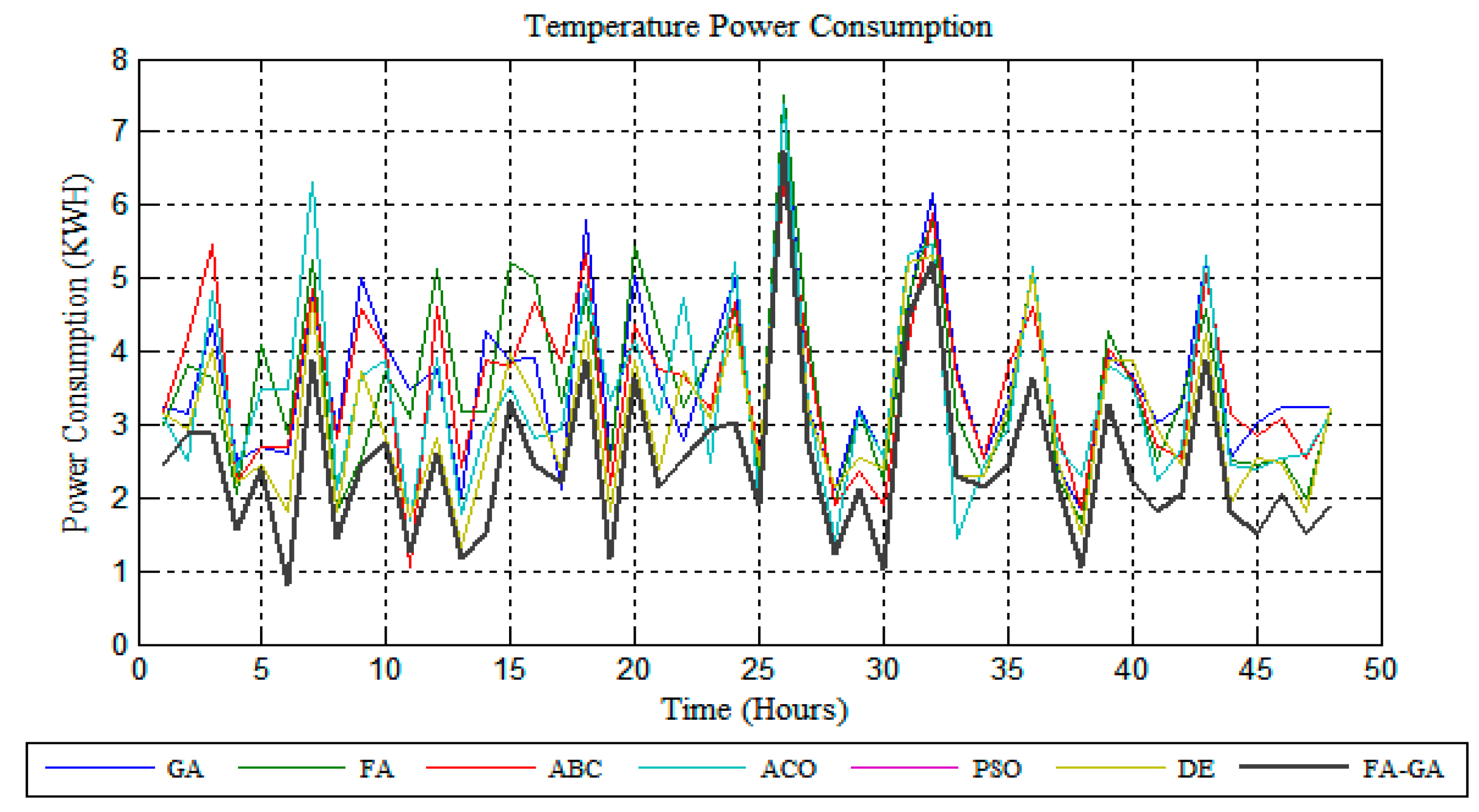
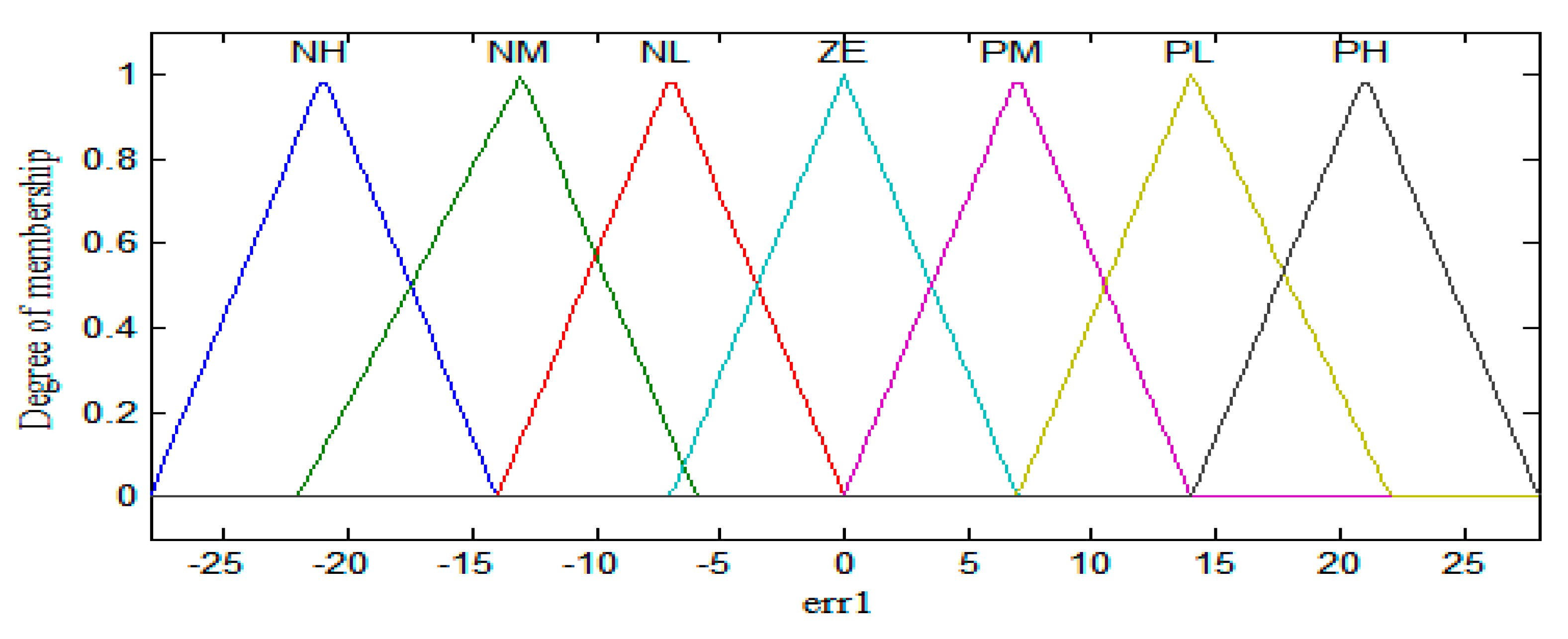
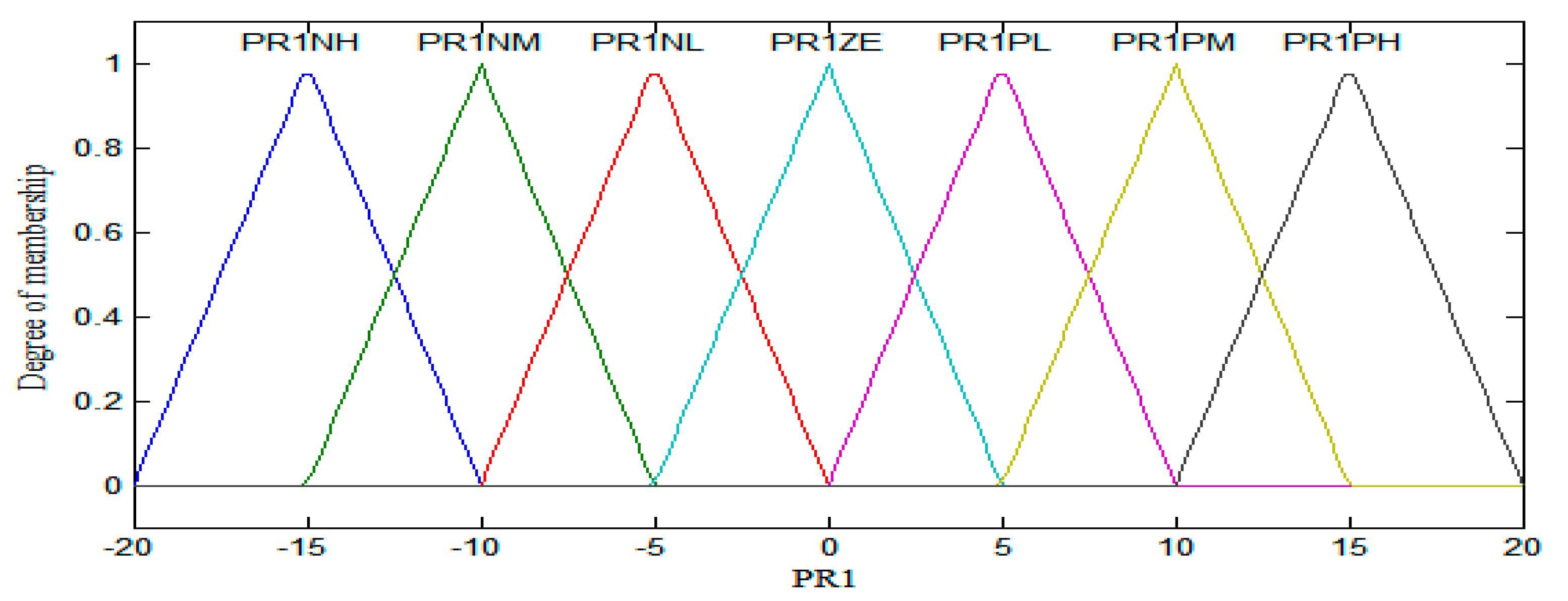
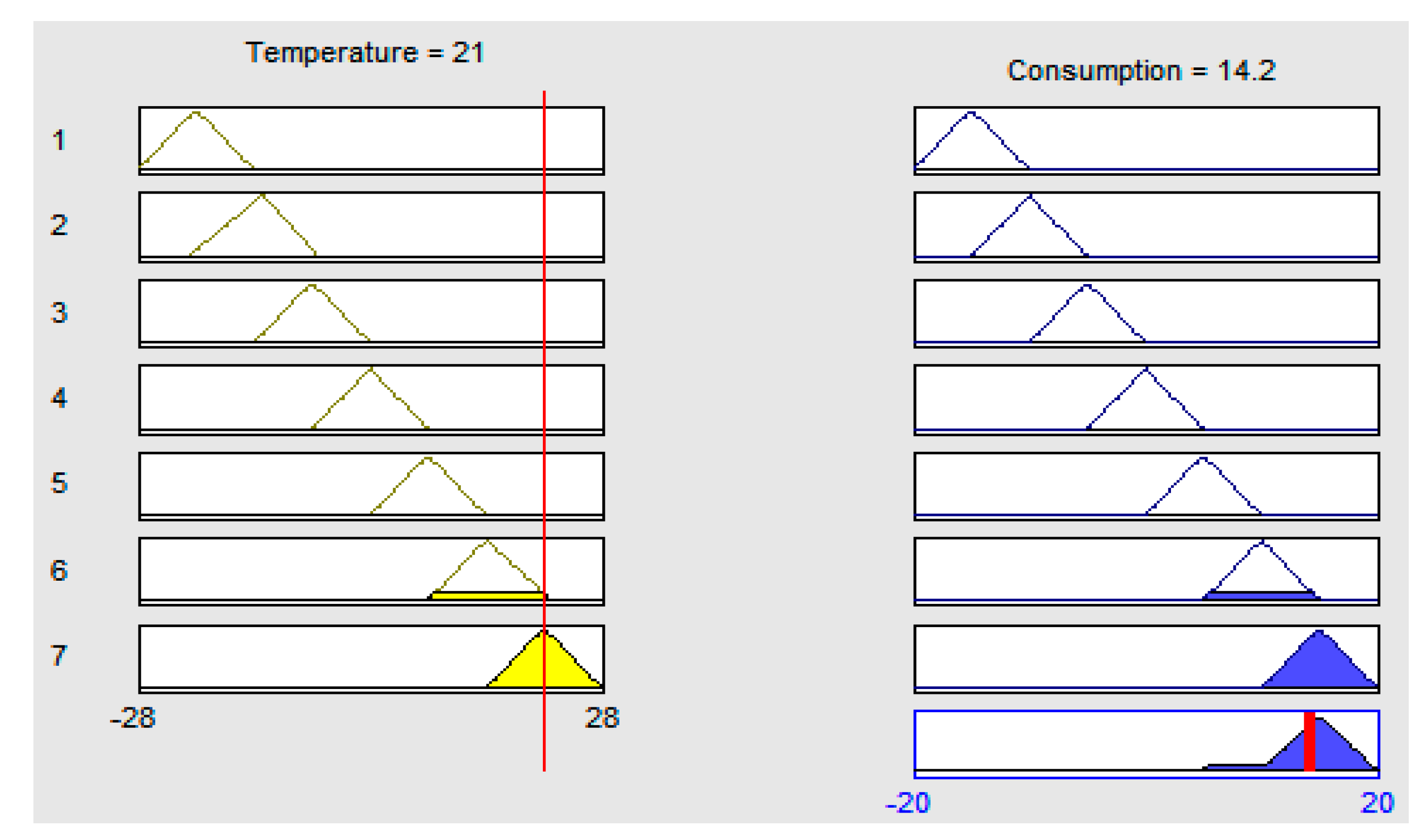
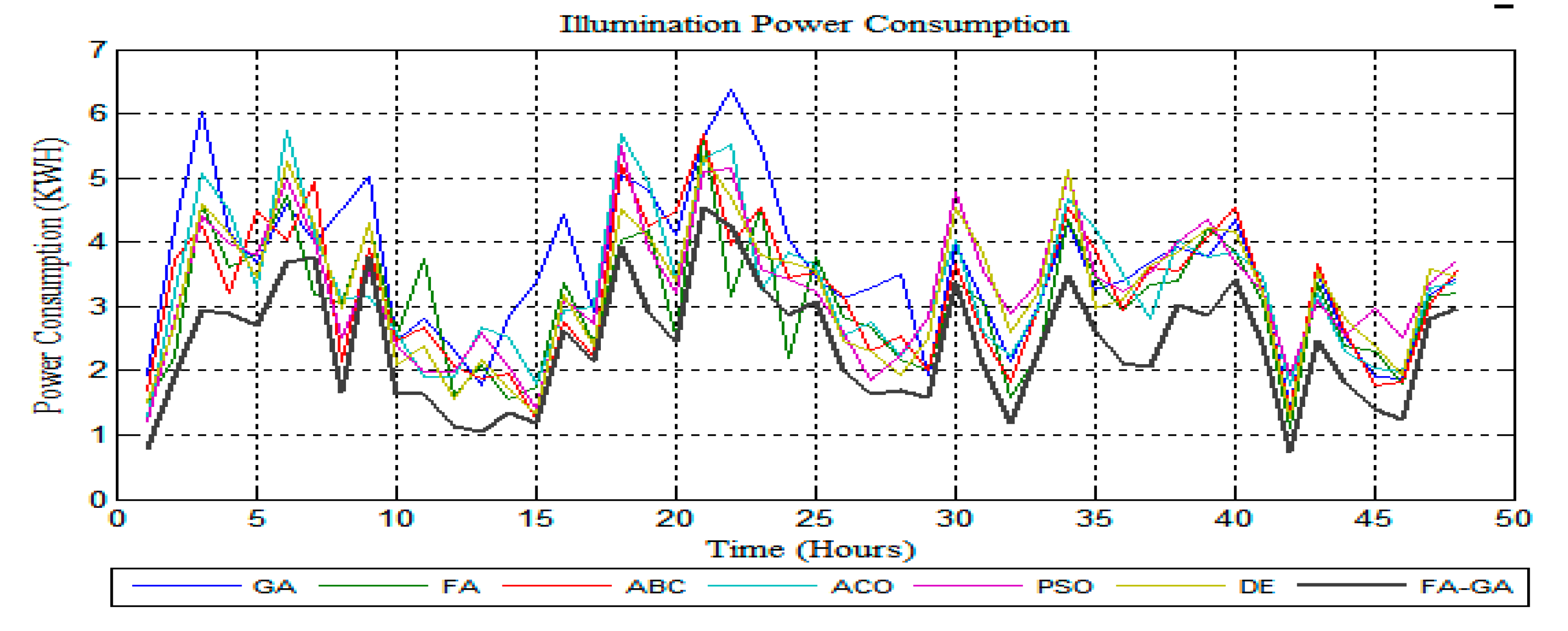
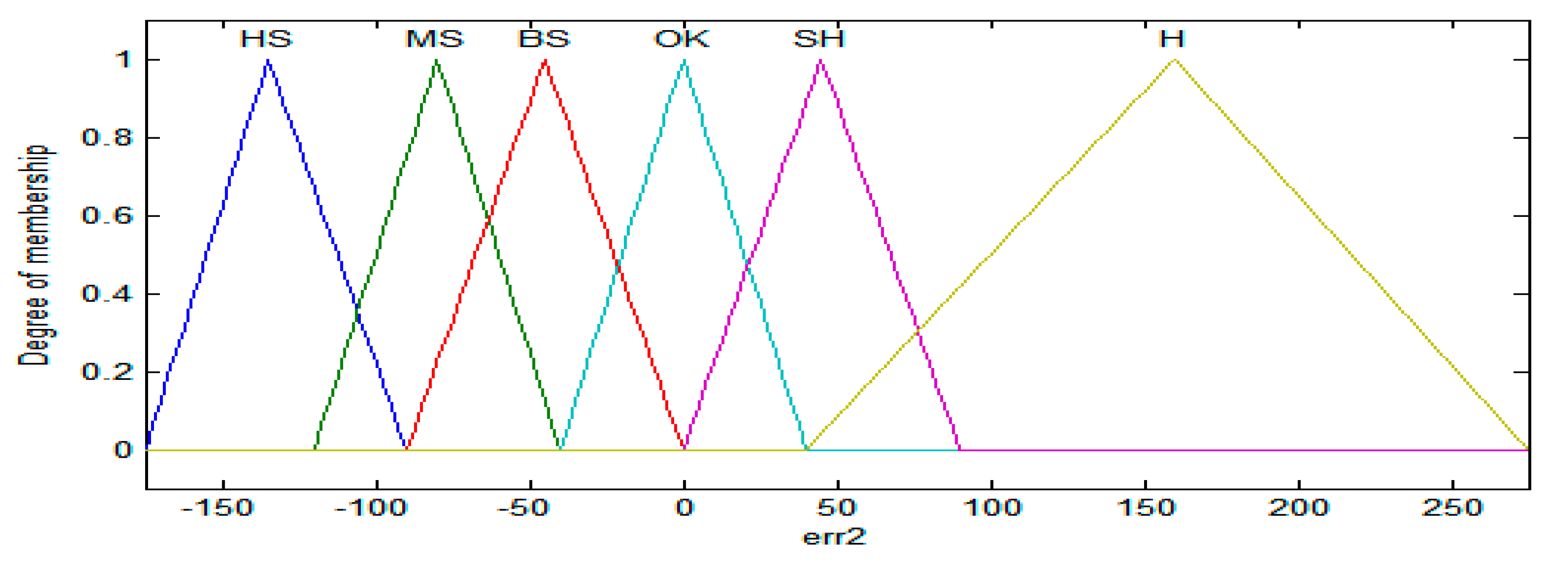

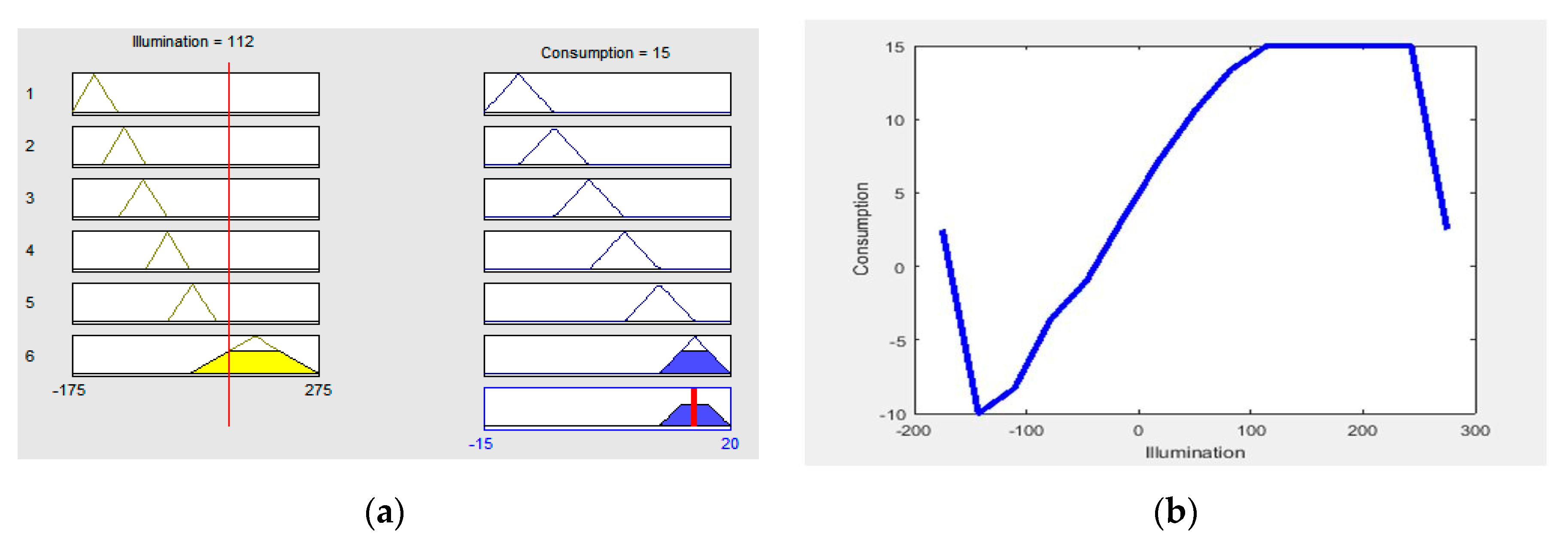
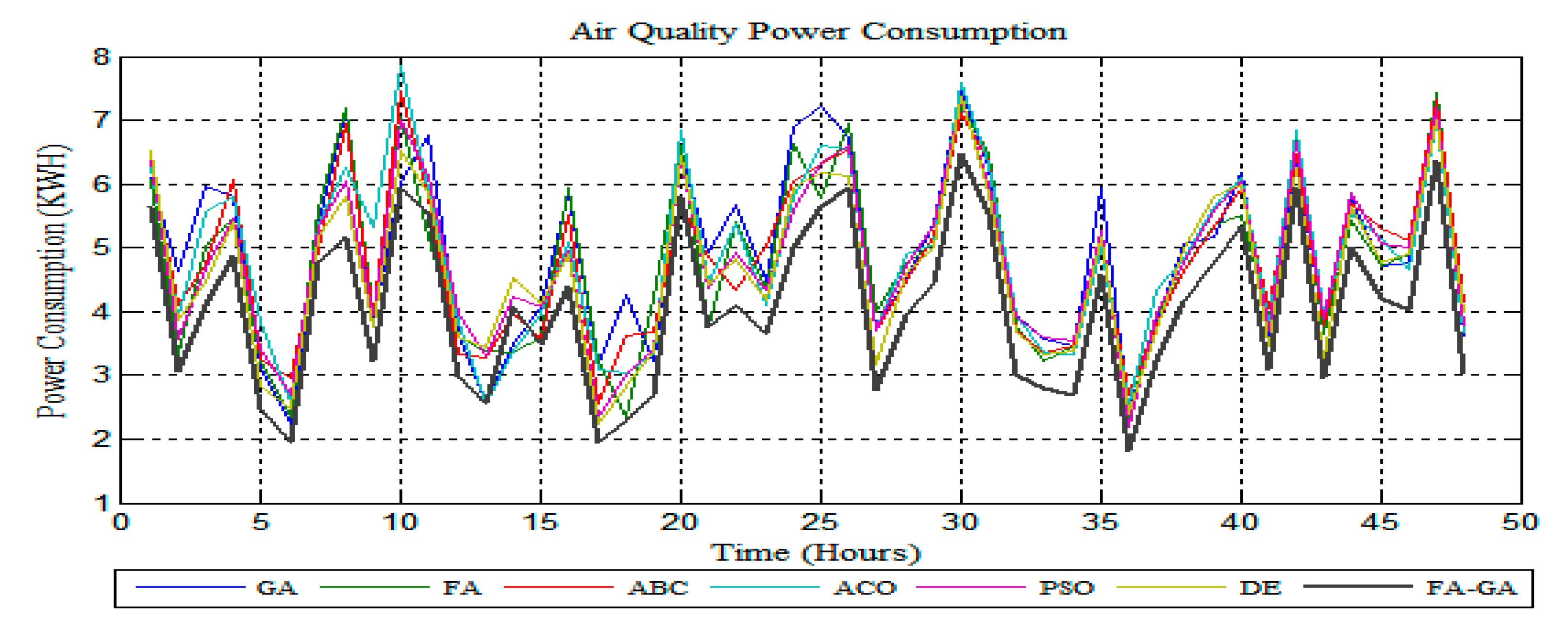
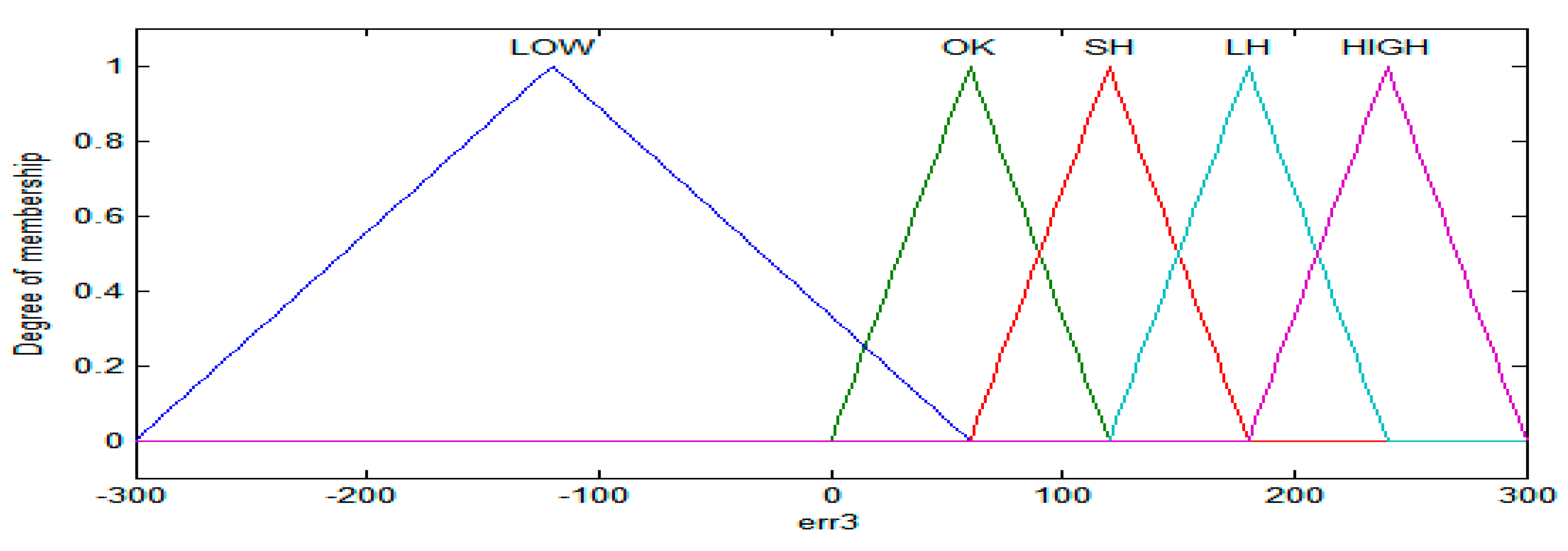
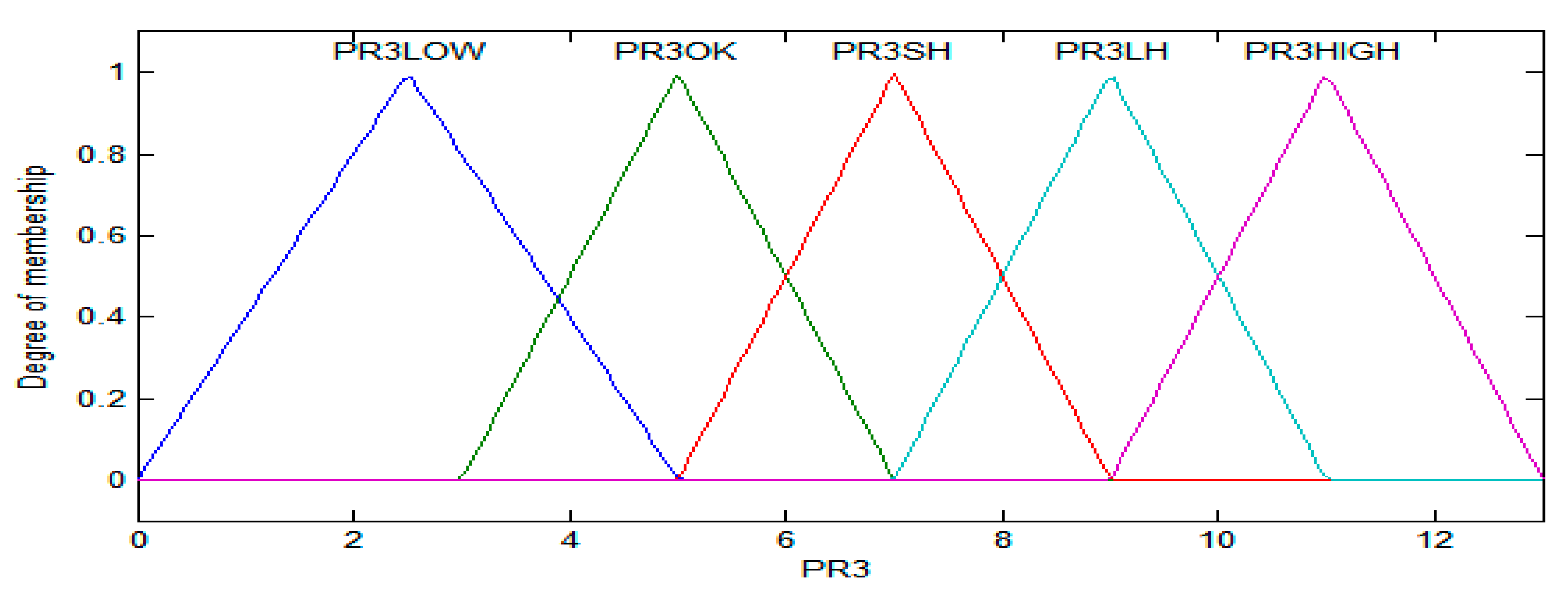
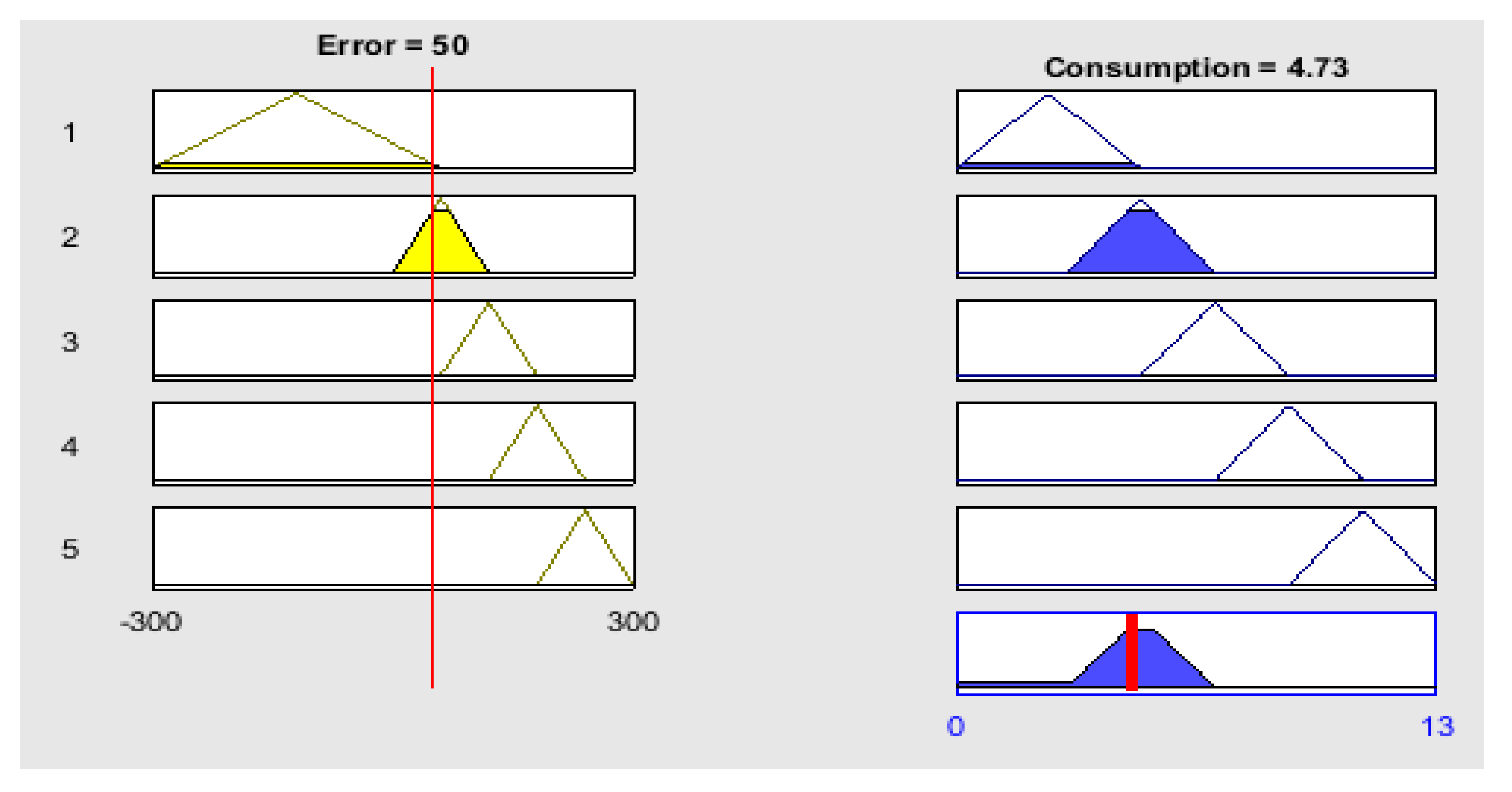
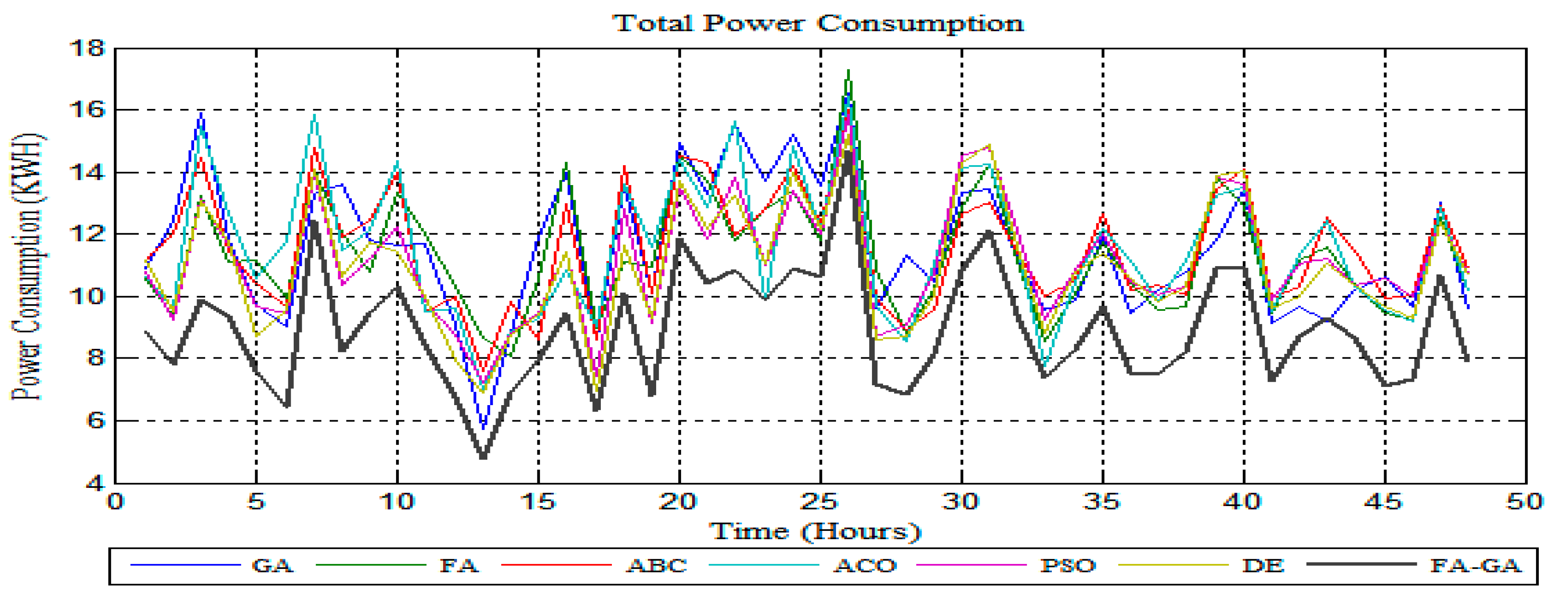
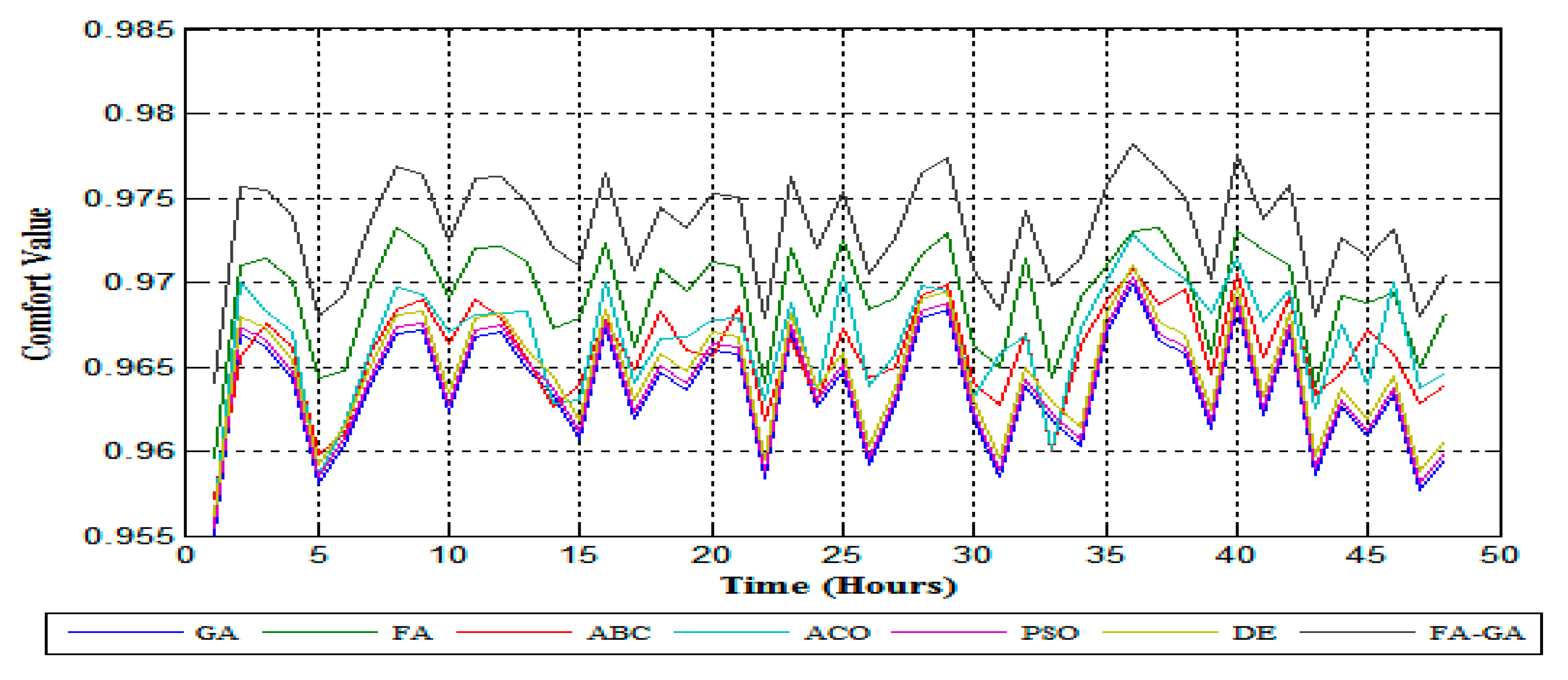
| Notation | Description |
|---|---|
| T | Environmental Temperature |
| Ts | User Set Temperature |
| I | Environmental Illumination |
| Is | User Set Illumination |
| A | Environmental Air Quality |
| As | User Set Air Quality |
| CI | Comfort Index |
| err1 | Error Difference between Environmental Temperature and User Set Temperature |
| err2 | Error Difference between Environmental Illumination and User Set Illumination |
| err3 | Error Difference Environmental Temperature and User Temperature |
| Prr1 | Preference Parameters for Temperature |
| Prr2 | Preference Parameters for Illumination |
| Prr3 | Preference Parameters for Air Quality |
| ETOTAL | Total Required Power |
| ET | Power Required for Temperature |
| EI | Power Required to Illumination |
| EA | Power Required for Air Quality |
| Emx | Maximum Supplied Power |
| GA | Genetic Algorithm |
| FA | Firefly Algorithm |
| ABC | Artificial Bee Colony |
| ACO | Artificial Ant Colony |
| DE | Differential Equation |
| Algorithms | Parameters | Values |
|---|---|---|
| FA | Iterations | 200 |
| Population Size | 150 | |
| Gamma | 1 | |
| Beta | 2 | |
| Alpha | 0.2 | |
| GA | Iterations | 200 |
| Population Size | 150 | |
| Type of Crossover | One-Point Crossover | |
| Probability of Crossover | 0.5 | |
| Mutation Rate | 0.1 | |
| Proposed Method | Iterations | 200 |
| Population Size | 150 | |
| Gamma | 1 | |
| Beta | 2 | |
| Alpha | 0.2 | |
| Type of Crossover | One-Point Crossover | |
| Probability of Crossover Mutation Rate | 0.5 0.1 |
| Parameter | Unit | User Lower Limit | User Upper Limit | Central Point | Environment Lower Limit | Environment Upper Limit |
|---|---|---|---|---|---|---|
| Temperature | Kelvin | 68.0 | 78.0 | 73.0 | 60.0 | 85.0 |
| Illumination | Lux | 730.0 | 880.0 | 800.0 | 700.0 | 920.0 |
| Air Quality | CO2 | 730.0 | 880.0 | 800.0 | 700.0 | 920.0 |
| GA | FA | ABC | ACO | PSO | DE | FA-GA |
|---|---|---|---|---|---|---|
| 10.55 | 10.55 | 8.88 | 10.34 | 9.34 | 10.66 | 9.45 |
| 4.55 | 5.87 | 5.54 | 4.54 | 4.45 | 4.66 | 3.8 |
| 2.965 | 2.65 | 2.665 | 1.996 | 3.023 | 1.998 | 1.75 |
| 4.564 | 4.453 | 3.301 | 4.454 | 3.576 | 4.343 | 2.96 |
| 3.564 | 3.132 | 2.665 | 3.564 | 3.343 | 2.554 | 1.45 |
| 6.564 | 6.665 | 5.795 | 7.476 | 7.342 | 7.554 | 6.32 |
| 8.665 | 8.178 | 8.276 | 7.665 | 7.4554 | 8.554 | 7.34 |
| −5.24 | −4.35 | −5.11 | −2.01 | −3.21 | −4.32 | −3.2 |
| −3.57 | −3.21 | −3.57 | −3.44 | −3.21 | −4.14 | −3.0 |
| −4.68 | −4.32 | −5.33 | −4.11 | −4.55 | −4.11 | −3.4 |
| −7.13 | −7.23 | −6.47 | −7.24 | −7.11 | −5.77 | −5.1 |
| −3.44 | −3.22 | −4.10 | −3.78 | −3.546 | −4.13 | −3.1 |
| −2.57 | −2.32 | −2.57 | −3.24 | −2.103 | −3.13 | −1.6 |
| −5.55 | −6.01 | −5.67 | −5.35 | −5.446 | −5.13 | −4.5 |
| −5.13 | −4.99 | −5.13 | −5.02 | −5.436 | −4.55 | −3.1 |
| −4.24 | −3.54 | −3.76 | −3.13 | −4.103 | −3.35 | −2.5 |
| 4.54 | 4.675 | 3.554 | 3.76 | 3.453 | 4.554 | 2.87 |
| 7.43 | 6.43 | 7.132 | 7.45 | 5.95 | 7.55 | 5.45 |
| 3.554 | 3.546 | 4.44 | 3.45 | 2.69 | 3.65 | 2.5 |
| 4.235 | 3.443 | 3.99 | 3.34 | 3.56 | 2.965 | 2.12 |
| 10.55 | 10.55 | 8.88 | 10.3 | 9.3432 | 10.666 | 9.45 |
| GA | FA | ABC | ACO | PSO | DE | FA-GA |
|---|---|---|---|---|---|---|
| 41.77 | 37.87 | 41.8 | 33.76 | 34.65 | 32.76 | 26.87 |
| 43.655 | 35.77 | 30.8 | 36.76 | 24.76 | 30.56 | 21.98 |
| 46.65 | 28.87 | 33.7 | 29.76 | 29.87 | 25.87 | 22.65 |
| 25.65 | 26.76 | 26.8 | 37.87 | 37.76 | 33.54 | 20.98 |
| 52.76 | 44.87 | 48.8 | 53.67 | 63.87 | 60.45 | 44.76 |
| 40.87 | 40.87 | 33.8 | 34.45 | 47.54 | 50.78 | 27.76 |
| 28.655 | 20.98 | 24.4 | 29.76 | 38.66 | 34.55 | 15.87 |
| 39.76 | 29.98 | 39.6 | 39.67 | 44.87 | 42.78 | 30.44 |
| −57.22 | −58.1 | −60.3 | −62.3 | −67.3 | −68.2 | −46.3 |
| −43.46 | −46.1 | −51.6 | −56.3 | −46.3 | −39.5 | −35.13 |
| −45.33 | −39.3 | −39.2 | −46.5 | −43.2 | −41.3 | −28.13 |
| −49.22 | −44.4 | −48.2 | −37.3 | −47.1 | −48.3 | −27.46 |
| −52.23 | −45.2 | −47.4 | −53.6 | −53.4 | −51.4 | −40.43 |
| −50.24 | −56.1 | −54.4 | −50.3 | −58.3 | −56.2 | −38.24 |
| −58.12 | −51.1 | −60.3 | −51.2 | −49.1 | −55.5 | −45.56 |
| −43.3 | −41.1 | −43.1 | −46.4 | −43.2 | −43.2 | −32.11 |
| 18.87 | 14.8 | 17.8 | 23.6 | 25.87 | 16.8 | 9.87 |
| 46.87 | 44.7 | 48.7 | 42.8 | 41.23 | 47.4 | 32.89 |
| 33.87 | 31.7 | 34.8 | 30.8 | 33.98 | 37.5 | 24.45 |
| 25.54 | 30.6 | 23.6 | 26.9 | 39.43 | 31.87 | 18.65 |
| 24.877 | 23.98 | 24.45 | 26.43 | 33.56 | 25.87 | 16.565 |
| GA | FA | ABC | ACO | PSO | DE | FA-GA |
|---|---|---|---|---|---|---|
| 138.6 | 142 | 134.8 | 134.8 | 135.7 | 125.8 | 121.8 |
| 76.76 | 81.87 | 75.87 | 75.98 | 75.87 | 64.87 | 56.87 |
| 92.76 | 97.87 | 91.87 | 100.8 | 96.87 | 94.76 | 80.75 |
| 110.4 | 103.8 | 106.8 | 103.8 | 109.8 | 102.7 | 91.65 |
| 153.6 | 148.9 | 145.8 | 155.8 | 150.6 | 151.6 | 132.7 |
| 128.8 | 132.8 | 130.5 | 129.8 | 122.8 | 120.6 | 113.8 |
| 80.76 | 77.87 | 75.87 | 80.76 | 80.67 | 75.76 | 61.65 |
| −73.1 | −66.1 | −69.1 | −69.1 | −74.1 | −68.2 | −57.2 |
| −71.0 | −71.3 | −71.1 | −68.2 | −72.5 | −69.5 | −55.1 |
| −122 | −107 | −103 | −103 | −108 | −106. | −94.2 |
| −50.1 | −48.2 | −55.1 | −52.0 | −45.0 | −49.4 | −37.3 |
| −78.1 | −81.2 | −78.2 | −89.1 | −81.5 | −76.1 | −66.3 |
| −104 | −95.1 | −95.1 | −99.2 | −98.2 | −102 | −85.2 |
| −106 | −110 | −109 | −116 | −115 | −119 | −98.2 |
| −127 | −113 | −122 | −125 | −124 | −123 | −109 |
| −74.2 | −79.1 | −83.1 | −78.1 | −76.1 | −71.1 | −63.2 |
| 131.7 | 137.8 | 132.8 | 140.7 | 136.8 | 128.8 | 121.8 |
| 77.87 | 74.87 | 77.98 | 80.87 | 79.87 | 66.87 | 60.76 |
| 118.9 | 111.7 | 116.9 | 113.8 | 120.5 | 115.8 | 102.8 |
| 96.8 | 96.87 | 108.8 | 105. | 103.9 | 97.87 | 86.6 |
| 97.8 | 100.7 | 104.8 | 95.8 | 102.7 | 100.87 | 82.87 |
| Parameters | Features | GA | FA | ABC | ACO | PSO | DE | FA-GA |
|---|---|---|---|---|---|---|---|---|
| Temperature Power Consumption | Minimum | 2.16543 | 1.86555 | 2.4365 | 2.5324 | 2.1543 | 2.2239 | 1.26734 |
| Maximum | 8.43356 | 8.57644 | 10.265 | 9.5467 | 9.5654 | 8.4578 | 6.1734 | |
| Average | 3.86755 | 4.59765 | 4.5431 | 5.3245 | 3.9786 | 4.1287 | 3.4167 | |
| Total | 187.79866 | 192.4534 | 193.65 | 187.543 | 182.565 | 179.534 | 159.6234 | |
| Illumination Power Consumption | Minimum | 1.85654 | 1.65445 | 1.854 | 1.59557 | 1.7564 | 1.6784 | 1.1785 |
| Maximum | 6.5334 | 6.8324 | 7.213 | 7.5684 | 6.9856 | 6.3905 | 5.16575 | |
| Average | 4.2554 | 4.155644 | 3.754 | 4.1456 | 4.3913 | 4.1845 | 3.2167 | |
| Total | 195.3545 | 172.3546 | 196.43 | 184.6741 | 177.653 | 183.597 | 152.5198 | |
| Air Quality Power Consumption | Minimum | 2.3243 | 1.63445 | 1.8567 | 2.03478 | 1.7859 | 1.6819 | 1.1798 |
| Maximum | 7.9433 | 7.5465 | 7.6456 | 8.1206 | 6.8423 | 7.1165 | 5.2344 | |
| Average | 5.57654 | 5.12544 | 4.3246 | 5.1408 | 4.8948 | 5.2109 | 3.1155 | |
| Total | 249.8548 | 237.2546 | 218.34 | 227.5213 | 229.643 | 231.934 | 197.4466 | |
| Total Power Consumption | Minimum | 5.84535 | 7.435462 | 7.4356 | 6.9445 | 6.4786 | 6.7659 | 4.3453 |
| Maximum | 14.4537 | 28.3456 | 23.546 | 16.8976 | 17.7812 | 20.376 | 13.8335 | |
| Average | 11.3432 | 13.3456 | 12.423 | 11.5987 | 12.1987 | 13.238 | 9.6687 | |
| Total | 589.453 | 561.6376 | 594.56 | 577.534 | 568.385 | 571.431 | 523.3853 | |
| Comfort Index | Minimum | 0.94321 | 0.94534 | 0.9356 | 0.94768 | 0.94987 | 0.94167 | 0.95734 |
| Maximum | 0.97435 | 0.96435 | 0.96435 | 0.96843 | 0.96871 | 0.96731 | 0.9873 | |
| Average | 0.95564 | 0.95767 | 0.9534 | 0.95165 | 0.9590 | 0.94956 | 0.9658 |
© 2020 by the authors. Licensee MDPI, Basel, Switzerland. This article is an open access article distributed under the terms and conditions of the Creative Commons Attribution (CC BY) license (http://creativecommons.org/licenses/by/4.0/).
Share and Cite
Wahid, F.; Fayaz, M.; Aljarbouh, A.; Mir, M.; Aamir, M.; Imran. Energy Consumption Optimization and User Comfort Maximization in Smart Buildings Using a Hybrid of the Firefly and Genetic Algorithms. Energies 2020, 13, 4363. https://doi.org/10.3390/en13174363
Wahid F, Fayaz M, Aljarbouh A, Mir M, Aamir M, Imran. Energy Consumption Optimization and User Comfort Maximization in Smart Buildings Using a Hybrid of the Firefly and Genetic Algorithms. Energies. 2020; 13(17):4363. https://doi.org/10.3390/en13174363
Chicago/Turabian StyleWahid, Fazli, Muhammad Fayaz, Ayman Aljarbouh, Masood Mir, Muhammad Aamir, and Imran. 2020. "Energy Consumption Optimization and User Comfort Maximization in Smart Buildings Using a Hybrid of the Firefly and Genetic Algorithms" Energies 13, no. 17: 4363. https://doi.org/10.3390/en13174363
APA StyleWahid, F., Fayaz, M., Aljarbouh, A., Mir, M., Aamir, M., & Imran. (2020). Energy Consumption Optimization and User Comfort Maximization in Smart Buildings Using a Hybrid of the Firefly and Genetic Algorithms. Energies, 13(17), 4363. https://doi.org/10.3390/en13174363






